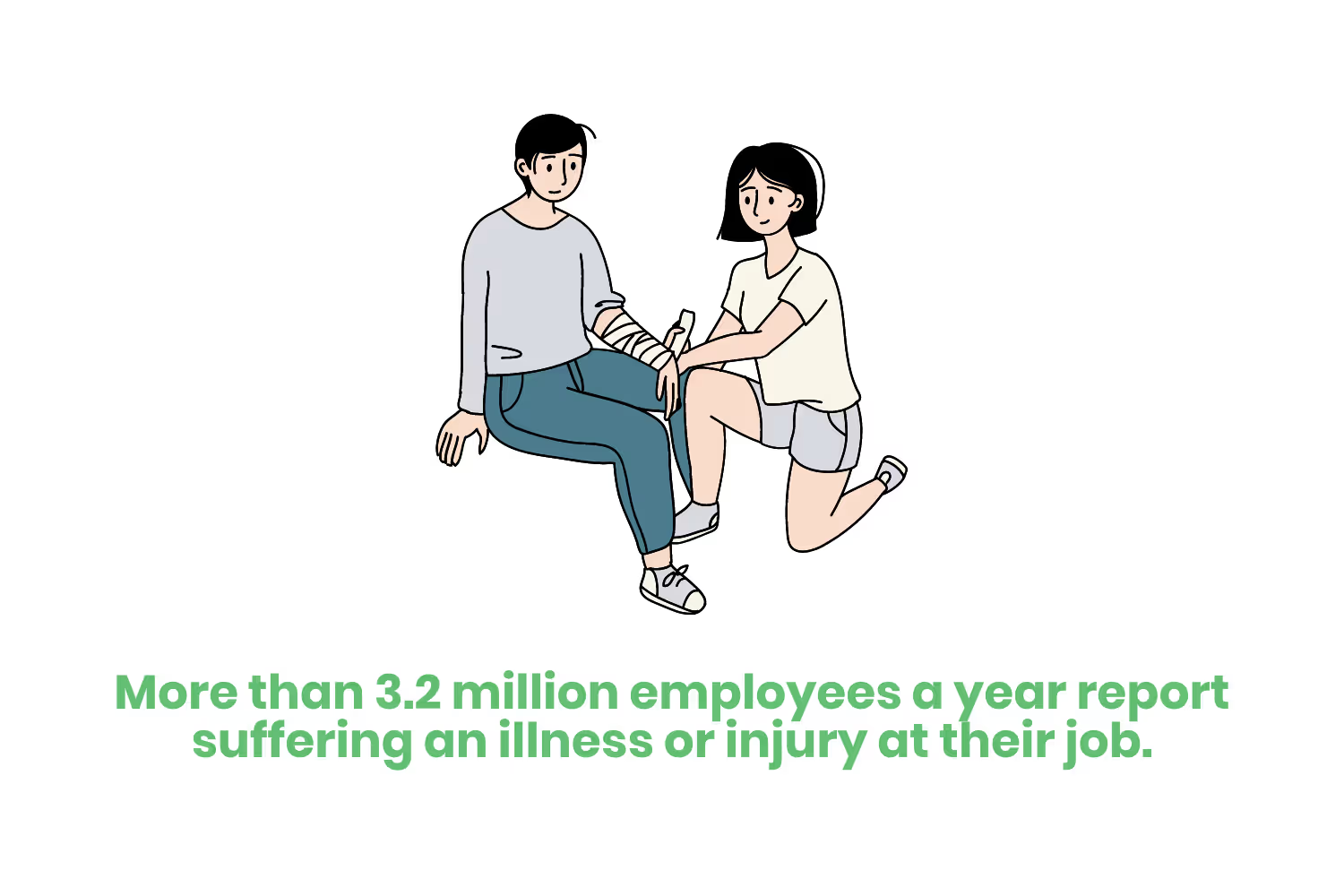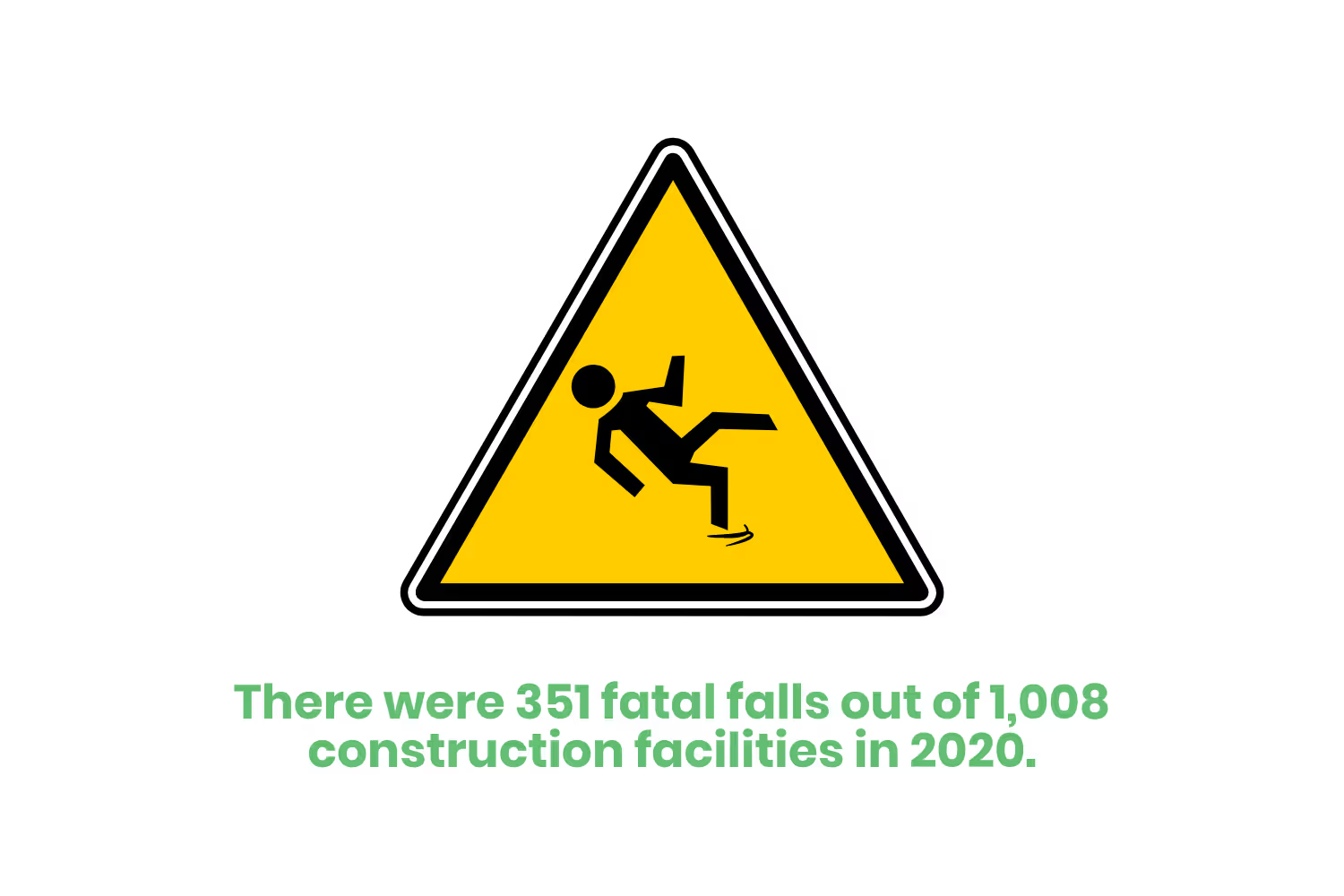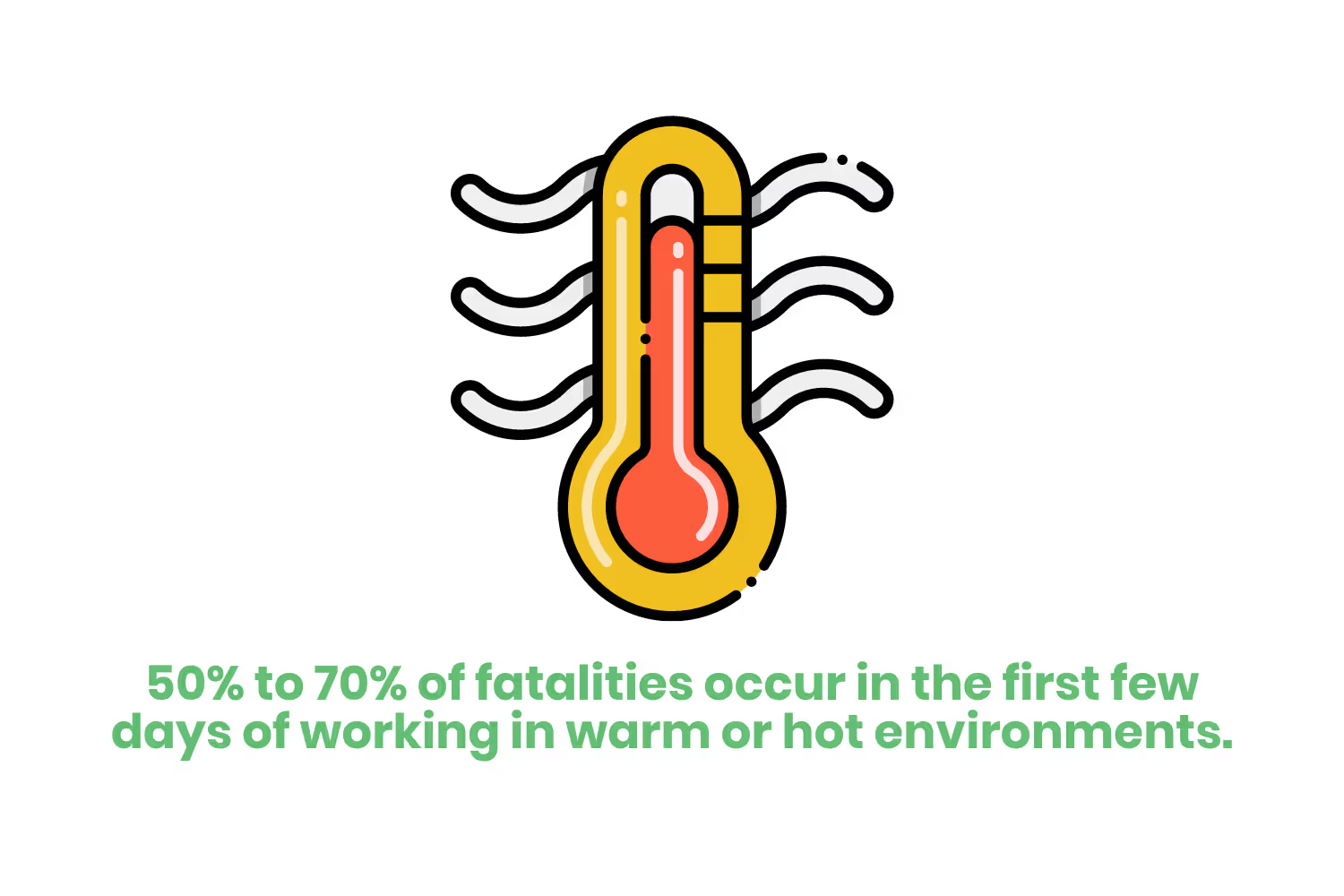The Trusted Top 10 OSHA Online Training Courses
In this blog, we go over the top 10 of the most widely practiced OSHA online training courses.

Did you know that 97% of Americans report that safety at work is one of the most important things they look for? It doesn’t matter what industry you work in, employers have a responsibility to ensure healthy and safe conditions. And what better way to do that than by adhering to guidelines set by the Occupational Safety and Health Administration (OSHA)?
Under the Occupational Safety and Health Act of 1970, employers must provide a safe environment for workers to avoid injury, illness, or death. A fast and effective way to do this is by instituting OSHA training courses for your employees to complete on a regular basis. These courses are essential for providing workers with the knowledge to navigate any potentially hazardous conditions.

These training courses must be for learners of all knowledge levels. Industry experts should also be the ones who develop training programs. In order to complete and receive proper credentials, make sure the training course you are taking is from a reputable source.
When companies ignore OSHA regulations, or perhaps just accidentally overlook them, violations and accidents become a real threat. These violations can have a negative effect on your business's reputation. Not to mention cost you in a lawsuit or even worse, seriously injure an employee.
But how do you know which courses to take? Of course, this relates back to the industry you are in and your specific risk factors. But for the sake of this blog, let’s go over the top 10 of the most widely practiced OSHA online training courses.
What is OSHA?
President Nixon signed OSHA into law in December of 1970. This regulatory agency holds employers responsible for providing safe and healthful conditions for workers.
To achieve these conditions, Congress created OSHA to:
- Set and enforce standards.
- Provide training.
- Provide outreach.
- Provide education.
- Provide compliance assistance.
Since the creation of OSHA, the government consequently reduced work-related fatalities by nearly 63%. Of course, this is a huge success, but there are still too many preventable injuries that continue to happen. There are still unsafe conditions, coupled with a lack of training, in workplaces across the U.S.
In fact, more than 3.2 million employees a year report suffering an illness or injury at their job.

OSHA Training Courses
Protecting employees is obviously the most important factor when it comes to providing training courses. And while safety training is critical to prevent accidents in the workplace, making sure it is engaging is important too.
Just throwing a dull and boring video at someone and expecting them to retain all of the information, doesn’t usually go well. Ask my 9th-grade history teacher. Highly engaged employees experience 70% fewer safety incidents.
Another important aspect an employer should consider when it comes to training is if the course meets compliance standards. With some planning, this is a relatively easy process to integrate into your training schedule. Such courses might include HIPAA compliance topics if you work in the medical field.
Helping to promote a safer workplace has financial benefits as well. The National Safety Council found that in 2020, the total economic impact of workplace injuries was nearly $164 billion.
By avoiding accidents and violations you can reduce unnecessary costs including:
- Workers’ compensation.
- Insurance.
- Legal bills.
OSHA standards can help keep your employees safe and help employers avoid costly fines. Anyway, let’s get into the 10 OSHA safety topics, along with a brief description of each, to integrate into your training program.

#1 Emergency Preparedness & Response
It’s impossible to predict when an emergency might happen, as it can happen at any time.
They can be disastrous if you haven’t put together a response plan or trained your team on what to do. Understanding the basic elements of an emergency action plan (EAP) and how to put one in place is essential.
No matter the scenario, whether it be a natural disaster, workplace violence, or another hazard, your employees should know how to report the incident. Most importantly, they need to know the best way to keep themselves safe.
OSHA’s general industry guidelines state that all emergency action plans must include (at the minimum):
- Processes for reporting emergencies (ex: fires).
- Emergency escape route assignments and evacuation plans.
- Procedures to oversee critical operations before evacuating. This applies to all employees who remain onsite.
- Methods to account for all employees after an emergency evacuation.
- For workers who may perform medical and rescue duties.
- Contact list of individuals’ names and job titles that can be of help, depending on the situation.
#2 Medical & First-Aid
Unfortunately, workplace injuries are impossible to completely avoid. So preparing your team to deal with them is key! It’s not just your employee’s health that’s on the line. In 2020, employers lost 99 million days of labor as a result of work-related injuries.
Medical and first-aid training should cover the resources available to offer guidance in an emergency situation. As well as when to seek help for more serious emergencies. The following topics at a minimum should appear throughout the program:
- Basic first-aid intervention.
- Basic adult cardiopulmonary resuscitation (CPR).
- Universal precautions for self-protection.
Some program elements to include when training your team are:
- Shock.
- Bleeding.
- Poisoning.
- Burns.
- Temperature extremes.
- Musculoskeletal injuries.
- Bites and stings.
- Medical emergencies and confined spaces.
Employers are responsible for providing first aid supplies needed for their program. This includes the type, amount, and maintenance of them. This program must be periodically reviewed to stay up to date with current first aid techniques and knowledge.
#3 Personal Protective Equipment
Personal protective equipment, also known as "PPE", helps to minimize exposure to hazards in the workplace. The use of PPE is one of the best ways to avoid serious workplace injuries or illnesses.
These items may include:
- Gloves.
- Safety glasses and shoes.
- Earplugs or muffs.
- Hard hats.
- Respirators or coveralls.
- Vests and full-body suits.
Employers must provide safety equipment to their workers, as well as ensure their proper use.
They must also train their team that uses PPE to know:
- When to use it.
- What sort of PPE to use.
- How to put it on correctly, adjust, wear and take it off.
- The limitations of PPE.
- Proper care, maintenance, useful life, and disposal of the equipment.
#4 Bloodborne Pathogens
Bloodborne pathogens are infectious microorganisms found in human blood. These microorganisms can cause diseases in humans and are often spread through the bodily fluids of an infected person entering the bloodstream of another person.
Pathogens can include, but aren’t limited to:
- Hepatitis B (HBV).
- Hepatitis C (HCV).
- Human immunodeficiency virus (HIV).
In a work setting, needlesticks and other sharps-related injuries may expose employees to this hazard. An employer must implement an exposure control plan in order to reduce or eliminate this hazard.
The control plan should include, but isn’t limited to, the following provisions:
- Use of engineering and work practice controls.
- Personal protective clothing and equipment.
- Employee training.
- Medical surveillance.
- Hepatitis B vaccinations.
#5 Fall Protection
The leading cause of death in the construction industry is falls. There were 351 fatal falls out of 1,008 construction facilities in 2020.
Employers must plan projects to ensure jobs are safely completed and with the correct PPE. This is especially true while working from heights 6 feet and above.

Investing in the right equipment may include (but isn’t limited to):
- Ladders.
- Scaffolds.
- Personal fall arrest systems (PFAS). Make sure PFAs fit correctly and are regularly inspected for continued use.
Every employee must be well trained on the setup and operation of PPE as well as hazards on-the-job. Hazards that should be thoroughly covered are ladder safety, scaffold safety, and roof safety.
#6 Hazard Communication
Chemical safety in the workplace is important in a variety of different fields. To keep your employees safe, information about the types of chemicals and the hazards associated must be available to everyone.
OSHA's Hazard Communication Standard (HCS) requires the following while working with dangerous chemicals:
- Hazard classification: Provide criteria for health and physical hazard classifications. As well as the classification of mixtures.
- Labels: Chemical manufacturers and importers must provide a label. These labels include a signal word, pictogram, and hazard statement for each hazard class and category. Precautionary statements must also be readily available.
- Safety Data Sheets: Now require a specified 16-section format.
#7 Heat Safety
Illness from heat exposure is preventable, but every year thousands of employees still become sick from occupational exposure. Some cases can even be fatal. 50% to 70% of fatalities occur in the first few days of working in warm or hot environments. This is because the body needs to build a tolerance slowly to the heat.

Some risk factors for heat illness include:
- Heavy physical activity.
- Warm or hot environmental conditions.
- Lack of acclimatization.
- Wearing clothing that holds in body heat.
Note that hazardous heat exposure does not just happen outdoors. This threat occurs indoors and can occur during any season if conditions are right.
#8 Electrical
Electricity is widely understood to be a serious workplace hazard. That's why we have OSHA’s electrical standards! There are professionals that work with electricity directly such as electricians and engineers, but let’s not forget those who work indirectly. We are talking about office workers here, who face exposure to less obvious electrical hazards every day.
Employers have a responsibility to their workers to provide PPE and training to their employees.
The design of OSHA’s electrical standard aim to protect employees from dangers such as:
- Electric shock.
- Electrocution.
- Fires.
- Explosions.
#9 Waste Management & Recycling
Recycling is great for the environment but can be dangerous for the workers involved in the process. Certain recycled or reused materials can directly pose hazards to these employees.
Some examples of hazardous materials are:
- Scrap metal.
- Electronics.
- Batteries.
- Used oil.
- Other chemicals.
Materials aside, there are other on-the-job hazards that employers need to keep in mind while training their teams.
These additional risks often include:
- Traffic safety.
- Moving machine parts.
- Unexpected machine startup.
- Lifting injuries.
- Slips, trips, and falls.
Employees must receive the proper training which covers all of these hazards as well as PPE, and what to do in an emergency situation.
#10 Heavy Machinery Safety
We’ve touched on this through other topics I mentioned earlier, but heavy machinery safety is so important that it deserves its own section. Employers must ensure that employees who operate these machines are fully trained, certified/licensed, and evaluated. Any employee that has not been fully certified/licensed and evaluated may only operate equipment under supervision.
If not properly used, heavy machinery can present all kinds of risks. OSHA requires all employers to train each employee on how to recognize and avoid unsafe workplace conditions.
An important topic to cover in your heavy machinery safety training is machine guarding. Providing safeguards, and teaching your team how to properly use/wear them, can save someone from a nasty injury. Equipment with moving parts such as a saw or hydraulic press calls for specific training and PPE for all employees that work with them.
Maintaining and Updating Your OSHA Training
OSHA training should not be a one-and-done type deal. This is an ongoing process that is likely to update and develop with time and technological advancement. Regular refresher training can help reinforce information and employee skills. By doing this, you can ensure that you prioritize work safety.
Additional specialized training courses might be necessary, especially if your career calls for you to wear different hats in your company, so to speak. New job responsibilities likely mean new hazards, after all.
Keep yourself and your employees up to date with any OSHA regulation changes. If you don’t have time to leaf through newsletters or attend conferences, consider outsourcing your training. Subscribing to accredited training courses from a third-party company takes the headache of keeping up with a changing industry away from you.
Conclusion
Choosing the right OSHA training course is the responsibility of every employer. Providing a safe and healthy work environment for employees is a top priority. When selecting the most appropriate training course for your business, consider the following:
- Your industry.
- Job role.
- Regulatory requirements.
- Employer requirements.
- Specific workplace hazards.
Training can not only help to prevent injuries and illness but can also improve employee morale. Not to mention reduce workers’ compensation costs and help you to avoid violation fines.
Emphasize your product's unique features or benefits to differentiate it from competitors
In nec dictum adipiscing pharetra enim etiam scelerisque dolor purus ipsum egestas cursus vulputate arcu egestas ut eu sed mollis consectetur mattis pharetra curabitur et maecenas in mattis fames consectetur ipsum quis risus mauris aliquam ornare nisl purus at ipsum nulla accumsan consectetur vestibulum suspendisse aliquam condimentum scelerisque lacinia pellentesque vestibulum condimentum turpis ligula pharetra dictum sapien facilisis sapien at sagittis et cursus congue.
- Pharetra curabitur et maecenas in mattis fames consectetur ipsum quis risus.
- Justo urna nisi auctor consequat consectetur dolor lectus blandit.
- Eget egestas volutpat lacinia vestibulum vitae mattis hendrerit.
- Ornare elit odio tellus orci bibendum dictum id sem congue enim amet diam.
Incorporate statistics or specific numbers to highlight the effectiveness or popularity of your offering
Convallis pellentesque ullamcorper sapien sed tristique fermentum proin amet quam tincidunt feugiat vitae neque quisque odio ut pellentesque ac mauris eget lectus. Pretium arcu turpis lacus sapien sit at eu sapien duis magna nunc nibh nam non ut nibh ultrices ultrices elementum egestas enim nisl sed cursus pellentesque sit dignissim enim euismod sit et convallis sed pelis viverra quam at nisl sit pharetra enim nisl nec vestibulum posuere in volutpat sed blandit neque risus.

Use time-sensitive language to encourage immediate action, such as "Limited Time Offer
Feugiat vitae neque quisque odio ut pellentesque ac mauris eget lectus. Pretium arcu turpis lacus sapien sit at eu sapien duis magna nunc nibh nam non ut nibh ultrices ultrices elementum egestas enim nisl sed cursus pellentesque sit dignissim enim euismod sit et convallis sed pelis viverra quam at nisl sit pharetra enim nisl nec vestibulum posuere in volutpat sed blandit neque risus.
- Pharetra curabitur et maecenas in mattis fames consectetur ipsum quis risus.
- Justo urna nisi auctor consequat consectetur dolor lectus blandit.
- Eget egestas volutpat lacinia vestibulum vitae mattis hendrerit.
- Ornare elit odio tellus orci bibendum dictum id sem congue enim amet diam.
Address customer pain points directly by showing how your product solves their problems
Feugiat vitae neque quisque odio ut pellentesque ac mauris eget lectus. Pretium arcu turpis lacus sapien sit at eu sapien duis magna nunc nibh nam non ut nibh ultrices ultrices elementum egestas enim nisl sed cursus pellentesque sit dignissim enim euismod sit et convallis sed pelis viverra quam at nisl sit pharetra enim nisl nec vestibulum posuere in volutpat sed blandit neque risus.
Vel etiam vel amet aenean eget in habitasse nunc duis tellus sem turpis risus aliquam ac volutpat tellus eu faucibus ullamcorper.
Tailor titles to your ideal customer segment using phrases like "Designed for Busy Professionals
Sed pretium id nibh id sit felis vitae volutpat volutpat adipiscing at sodales neque lectus mi phasellus commodo at elit suspendisse ornare faucibus lectus purus viverra in nec aliquet commodo et sed sed nisi tempor mi pellentesque arcu viverra pretium duis enim vulputate dignissim etiam ultrices vitae neque urna proin nibh diam turpis augue lacus.




